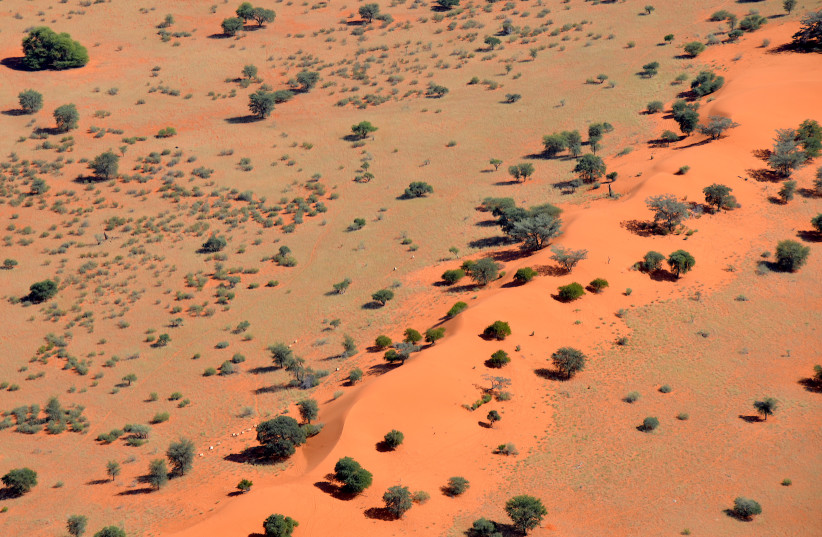Researchers found evidence that the dry plateau of Kalahari in South Africa once had abundant sources of water, including streams, pools and waterfalls.
In a peer-reviewed study published in PLOS ONE, researchers conducted data sequencing on samples from deposits of tufa, a porous sedimentary rock made of calcium carbonate that is formed by the evaporation of fresh groundwater as springs.
The researchers, led by Jessica von der Meden, a PhD candidate at the University of Cape Town's (UCT) Department of Geological Sciences and Human Evolution Research Institute, used low-impact sampling in order to preserve the surrounding tufa deposits.
The team used a geological hammer, mallet and chisel to collect 18 of the tufa samples, and then, using a modified drill with a water swivel and a custom diamond-tipped barrel, they collected eleven small cores from the deposits.
The researchers then encased the cores in epoxy and then cut in half with a diamond rock saw and polished before making thin sections to study using a polarizing light microscope.

“There have been very few well-preserved, datable archaeological sites in the interior of southern Africa that can tell us about Homo sapiens’ origins away from the coast.”
Dr. Jayne Wilkins, Human Evolution Research Institute, University of Cape Town
Von der Meden's research found connections between human presence and water availability in southern Kalahari before 71,000 years ago, according to UCT.
During the Last Glacial Maximum 20,000 years ago these connections become less apparent due to the lack of tufas that date to that period, suggesting that the environment was arider, the university added.
UCT noted that the research contradicts the hypothesis that humans only lived in the region during wetter periods and may indicate behavioral adaptations based on dry conditions.
“There have been very few well-preserved, datable archaeological sites in the interior of southern Africa that can tell us about Homo sapiens’ origins away from the coast,” said Von der Meden's co-supervisor Dr. Jayne Wilkins.
Earliest evidence of innovative technological behaviors
Von der Meden's research builds upon a previous peer-reviewed study in Nature journal that provided some of the earliest evidence of innovative technological behaviors at Ga-Mohana Hill from about 105,000 years ago, according to UCT.
The university added that the excavations at Ga-Mohana Hill, which has ritual significance to the local community, are being conducted with the cooperation of the Baga Motlhware Traditional Council.
